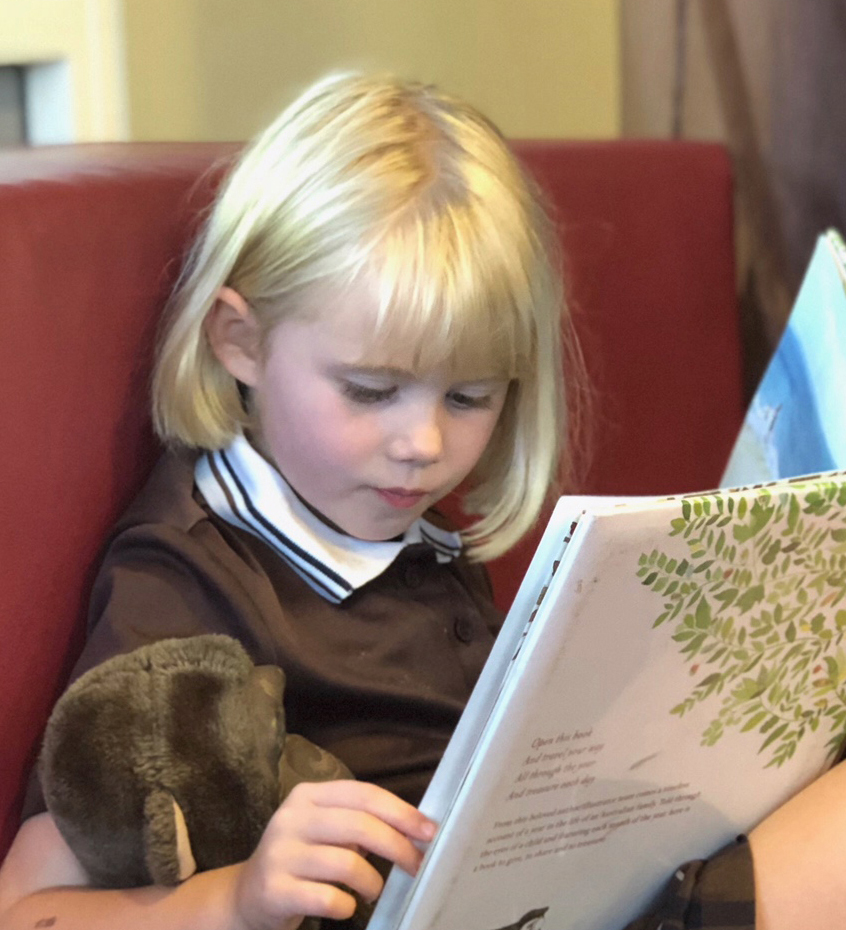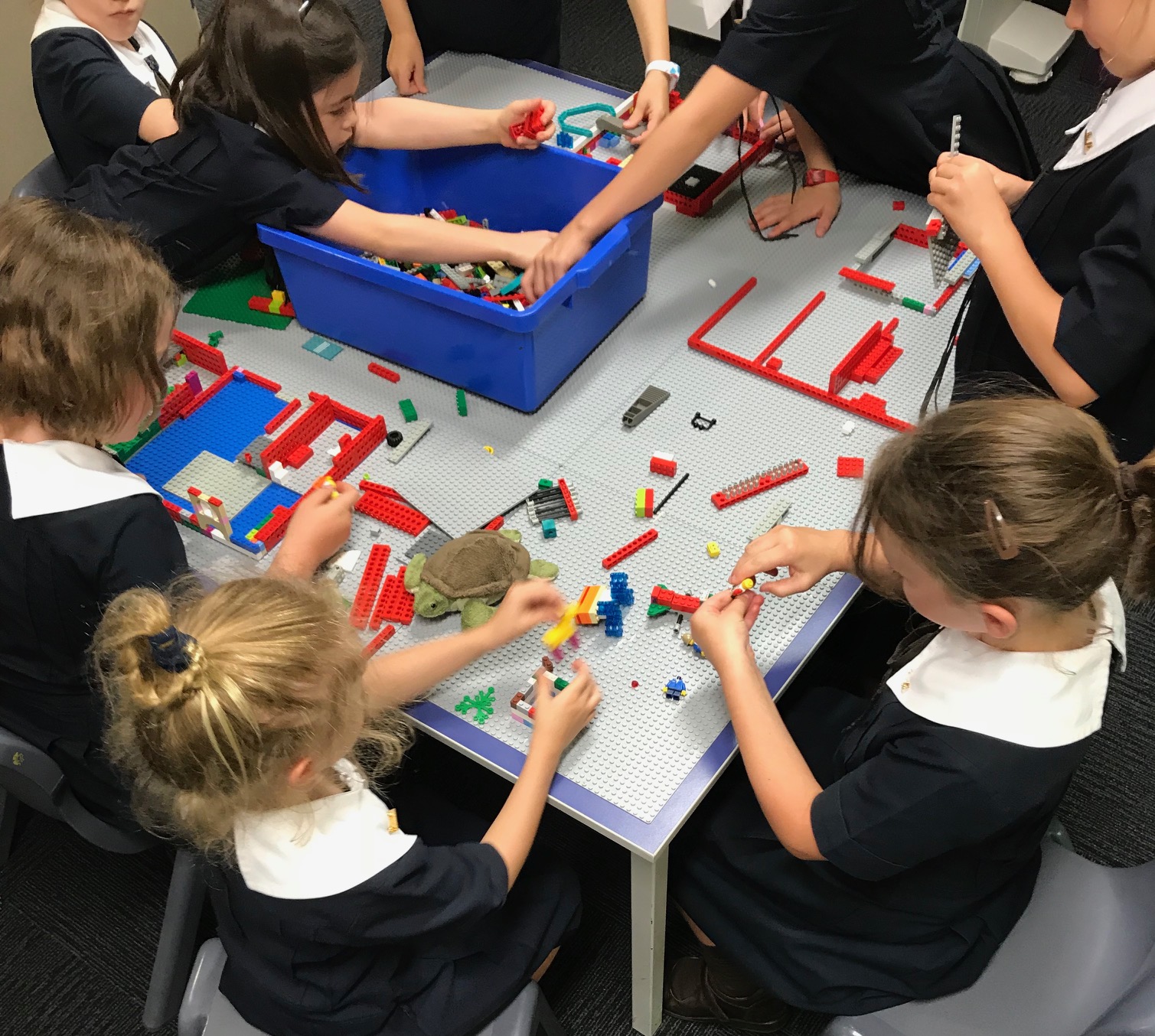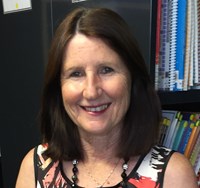Issue 105
Term 2 2018
School libraries enhancing student wellbeing
School libraries foster student wellbeing, providing students with a place of refuge where creativity and mindfulness are valued.
The school library is the hub of the school. It is a place for students to come and be free from the expectations of time, home, playground and classroom. It is a safe place where students can come to chill out, meet, talk, study, make and play. For many students, school libraries have always been a place of refuge from the playground or extreme weather.
School libraries, like so many public libraries, are changing. The library is no longer a ‘silent’ place to do academic work. With the vast amount of information and technology available to our students, the library needs to be a place where creativity, innovation and collaboration are possible. It is welcoming and relaxing, yet provides a stimulating and flexible learning environment too. The creation of a ‘makerspace’ within the school library has been a rewarding experience for the students here at St Aidan’s Anglican Girls’ School.
The library is that place where student wellbeing can be fostered and encouraged. By providing regular library lessons and being open during, before and after school, we give students access to an incredible space where teacher librarians and other school library professionals are at their aid. Teacher librarians and classroom teachers prepare lessons for students in the areas of healthy minds and bodies: protecting against bullying, being safe online, respecting diversity, making responsible choices, and building positive relationships.
Wellbeing is difficult to define as it is different for each person, but there are commonalities. It is more than just being happy with life. There has been a lot of research overseas and here in Australia to incorporate it into the school curriculum. Student wellbeing is emerging as an important approach to the development of students’ social, emotional and academic competence, and is significant in preventing youth depression, suicide, self-harm, antisocial behaviour (including bullying and violence), and substance abuse.
Wellbeing is important and ‘the whole child theory’ and ‘holistic education’ are aimed at helping students be the most that they can be, or what Maslow (1954) referred to as achieving ‘self-actualisation’. Ron Miller’s four core qualities that characterise a holistic education — experiential learning, personal relationships, interior life of children (feelings etc), and ecological consciousness — can all be met within the setting of a library.
A whole-child focus was reflected in the Australian education ministers’ statement as far back as 2008: ‘Schools play a vital role in promoting the intellectual, physical, social, emotional, moral, spiritual and aesthetic development and wellbeing of young Australians, and in ensuring the nation’s ongoing economic prosperity and social cohesion’ (MCEETYA 2008, p. 4).

Libraries provide a place where students can relax, meet, make, play — and of course read.
Evidence (Noble & Wyatt 2008) shows that students with high levels of wellbeing are more likely to attain higher levels of academic achievement including completing Year 12, and possess better mental health, and a more pro-social, responsible and lawful lifestyle.
Makerspaces within libraries encapsulate the 4Cs of future skills: creating, communicating, collaborating, and critical thinking. In addition, it is increasingly being recognised that makerspaces also support student wellbeing and develop what I propose as the 3Rs: resilience, relationships and rebellion. Here, ‘rebellion’ gives students permission to use their creativity to disrupt the norm.
When students engage in the many activities and opportunities provided in a library or library makerspace, they relax and have fun. It is non-threatening and students can fulfil their own desires to give things a go. It gives students wings and the permission to forgive themselves for not being perfect; failing becomes part of the fun. This can prevent procrastinating about starting things. Solving problems and challenges when creating and trying to make things work also gives students the confidence to succeed. They can share, collaborate and help each other in the pursuit of making. Giving students purpose and allowing passions to be explored fulfils an innate human need. Libraries allow students to get their curiosity and creativity back, which Sir Ken Robinson (2007) fervently believes needs to be reinstated.
Libraries support student wellbeing and provide a gathering place to talk; share ideas, skills and stories; play with Lego; play or listen to music; and build relationships with peers, teachers and facilitators. They are where emotional support can be given by spending time with others to listen and talk both formally and informally, and feelings and understanding can be developed by working with friends and peers on tasks and projects. Cognitive development can be stimulated by providing challenges and opportunities for discovery and play, like pulling computers apart, and naming and identifying parts and what they do. Learning new skills can help boost confidence and a sense of achievement and deeper learning. The library can benefit students intellectually through promoting reading, researching and taking part in many STEAM and innovative possibilities by sharing and learning together, motivated by fun and self-fulfilment.
Canadian research (Jackson 2015) reported that students felt less stressed after participating in various library programs, with extended hours, free caffeine and snacks, and pet therapy clearly being the most popular. Yoga, mindfulness, pet therapy, and micro-breaks provided students with healthy, positive coping mechanisms for relieving stress. These initiatives also allowed the libraries to engage users in unexpected ways through social media and served as an unintentional but useful way to promote the library to the broader community.
Lucy Clark, senior editor of The Guardian in Australia and a past student of St Aidan’s, gives a personal account of her daughter’s experiences in her book Beautiful Failures, supported by research of the education system. She also addresses issues about the pressures of standardised testing, peers, family and cultural diversity. Clark talks about the amount of competition in schools for awards, marks, and places in schools and universities.
High-stakes testing, apart from causing anxiety and stress, can lead to a shift from supportive, collaborative and inquiry-based learning to increasingly competitive and individualistic attitudes and ways of learning, requiring teachers to become more traditional in their pedagogy. So, with pressure on teachers and students, the library has an important part to play by providing a stress-free environment to recover and invigorate.
Clark also discusses the influence of increasing levels of tuition aimed at improving results, and how this affects students in Australian schools. She writes about lost childhood and adolescence: no time for enjoying growing up!
In her book, Clark also presents the increased amount of self-harm and suicide among school-aged students, and the fact that huge numbers come from countries that do well in PISA (The Programme for International Student Assessment). In contrast, the author points out the relative success of Finnish students, in a country where there is very little standardised testing.

Makerspaces allow students to explore, tinker and take on new challenges, without the pressure of needing to perform well.
A library, then, is positioned to support student wellbeing by being that place to de-stress, especially during or before examinations; to chill out or be motivated to learn through the varied activities that are offered in the library. Researchers in the UK studied 658 students and discovered that after engaging in something ‘crafty’, students felt happier and calmer the following day, with more energy, too (Conner 2016). According to Margaret Hodge of Voluntary Arts, ‘improving people’s wellbeing through participation in the arts’ has been evident (Devlin 2010). Colouring has also proven effective at reducing anxiety among undergraduates (Powell, Alcorn & Lindsay 2017).
The story of one of our students, Anna, demonstrates how student wellness can increase in a safe, welcoming environment where there is freedom to explore, play, and create. Anna has been coming to our library for a few years before school and during lunchtime. She is a sporty girl, but reserved. She had struggled with literacy and lacked confidence in her abilities. Anna used to come in and play with GoldieBlox, building interesting structures. She also started to build circuits with our Snap Circuits blocks. She was fascinated by motors and was always creating things with them, such as windmills and flying shapes with propellers, and would look for illustrated books to give her ideas.
Last year, Anna entered the Ekka (The Royal Queensland Show) competition, which involved designing a toy. She designed a DrawBot in the shape of a crab, which had a battery-run motor and legs made of textas to draw with. She had off-centred the motor spindle, which caused the crab to vibrate and move. She won first prize! Her mother expressed how her daughter had found peace, comfort and interest in the equipment and books in the library. Success breeds success — Anna grew in her ability to problem-solve, and in her confidence to collaborate and believe in herself.
The school library serves the whole-school community by providing and supporting events like author visits, Readers Cup competitions, parent functions, professional presentations, social nights, hobby nights, and the list goes on. These events and functions all benefit and create wellbeing among students, teachers, family and the wider school community.
References
Clark, L 2017, Beautiful failures, Penguin Random House, North Sydney
Conner, T 2017, 'Creative activities promote day-to-day wellbeing: Otago research', Journal of Positive Pscyhology
Devlin, P 2010, Restoring the balance: the effect of arts participation on wellbeing and health, Voluntary Arts England, Edinburgh, http://www.artsforhealth.org/resources/VAE_Restoring_the_Balance.pdf
Jackson, B 2015, ‘The state of Canadian library data’, Partnership: The Canadian Journal of Library and Information Practice and Research, 10 (1). DOI: 10.21083/partnership.v10i1.3505
Kochhar, C & Heishman, A 2010, Effective collaboration for educating the whole child, Corwin, Thousand Oaks
Maslow, AH 1987, Motivation and personality (3rd ed., revised by R Frager, J Fadiman, C McReynolds & R Cox), Harper & Row, New York
Ministerial Council on Education, Employment, Training and Youth Affairs (MCEETYA) 2018, Melbourne declaration on educational goals for young Australians, Curriculum Corporation, Carlton South
Noble, T & Wyatt, T 2008, Report to the Department of Education, Employment and Workplace Relations: scoping study into approaches to student wellbeing, Australian Catholic University and Erebus International, https://docs.education.gov.au/system/files/doc/other/scoping_study_into_approaches_to_student_wellbeing_final_report.pdf
Powell, A, Alcorn, K & Lindsay, K 2017, 'Effect of coloring on student stress levels', American Journal of Recreation Therapy, vol 16, no 1
Queensland Studies Authority, 2009, Student assessment regimes: getting the balance right for Australia (Draft discussion paper), Brisbane
Robinson, K 2007, TED talk: Do schools kill creativity?, https://www.youtube.com/watch?v=iG9CE55wbtY&t=3s
Image credits
Supplied by St Aidan's Anglican Girls’ School
